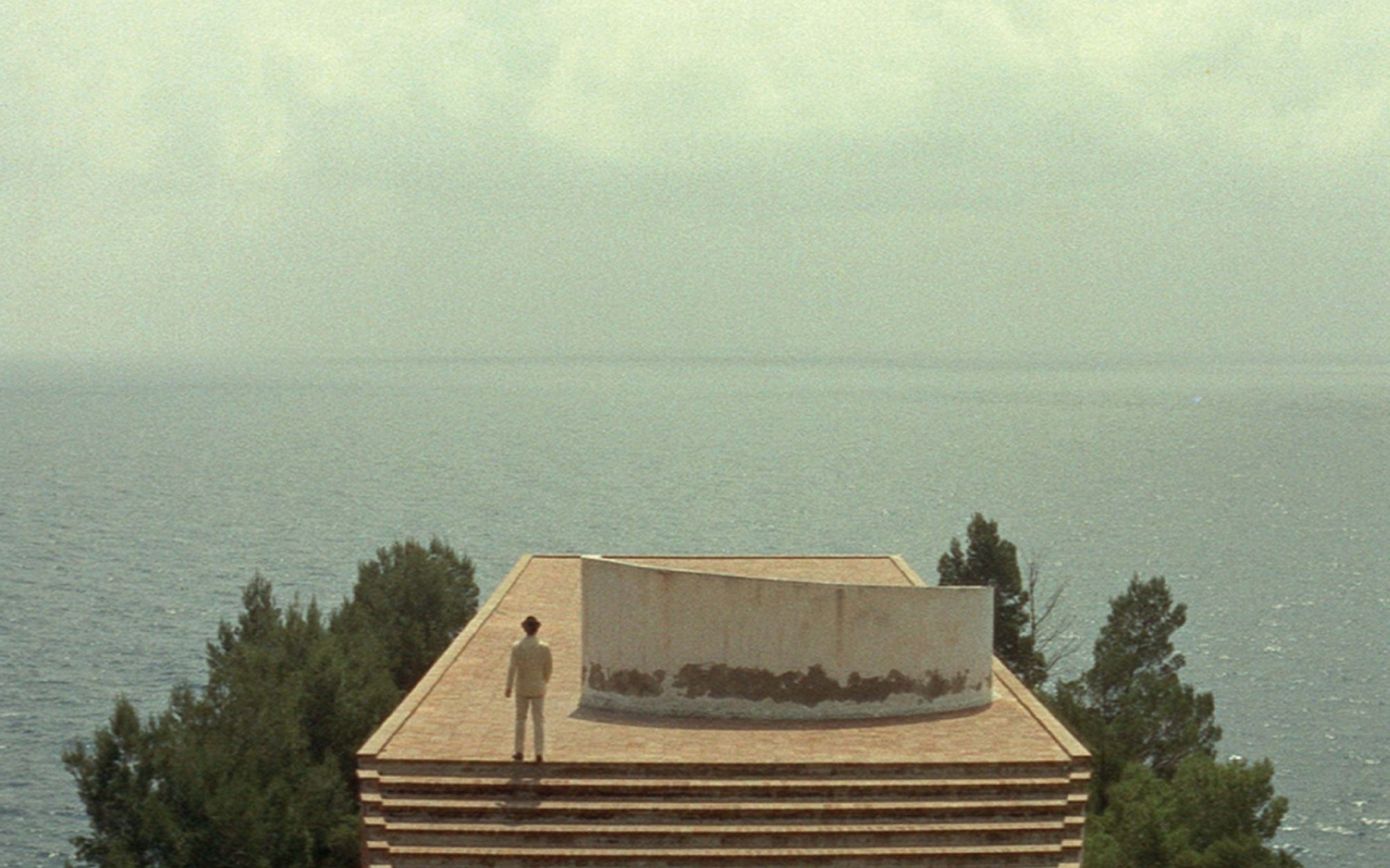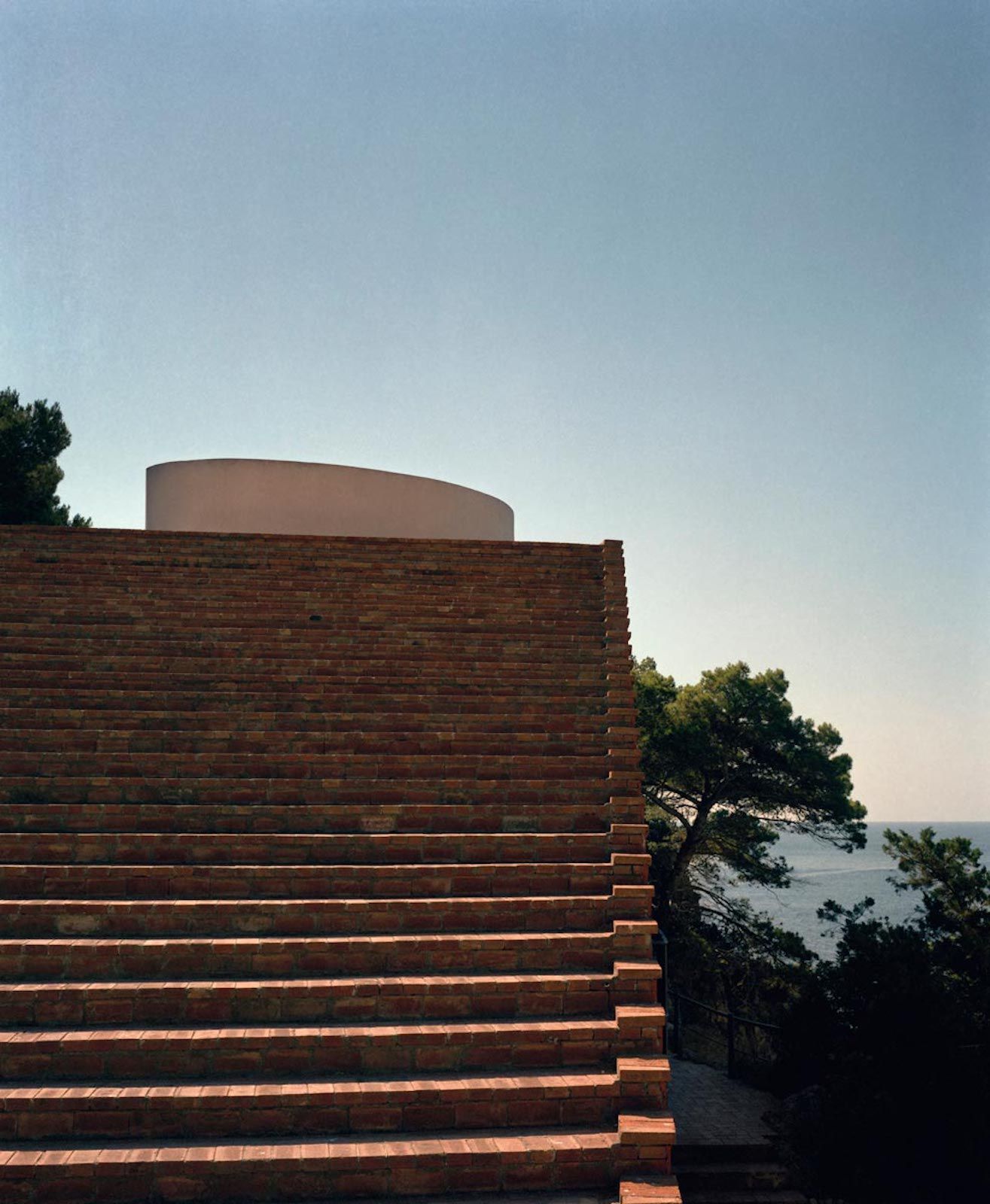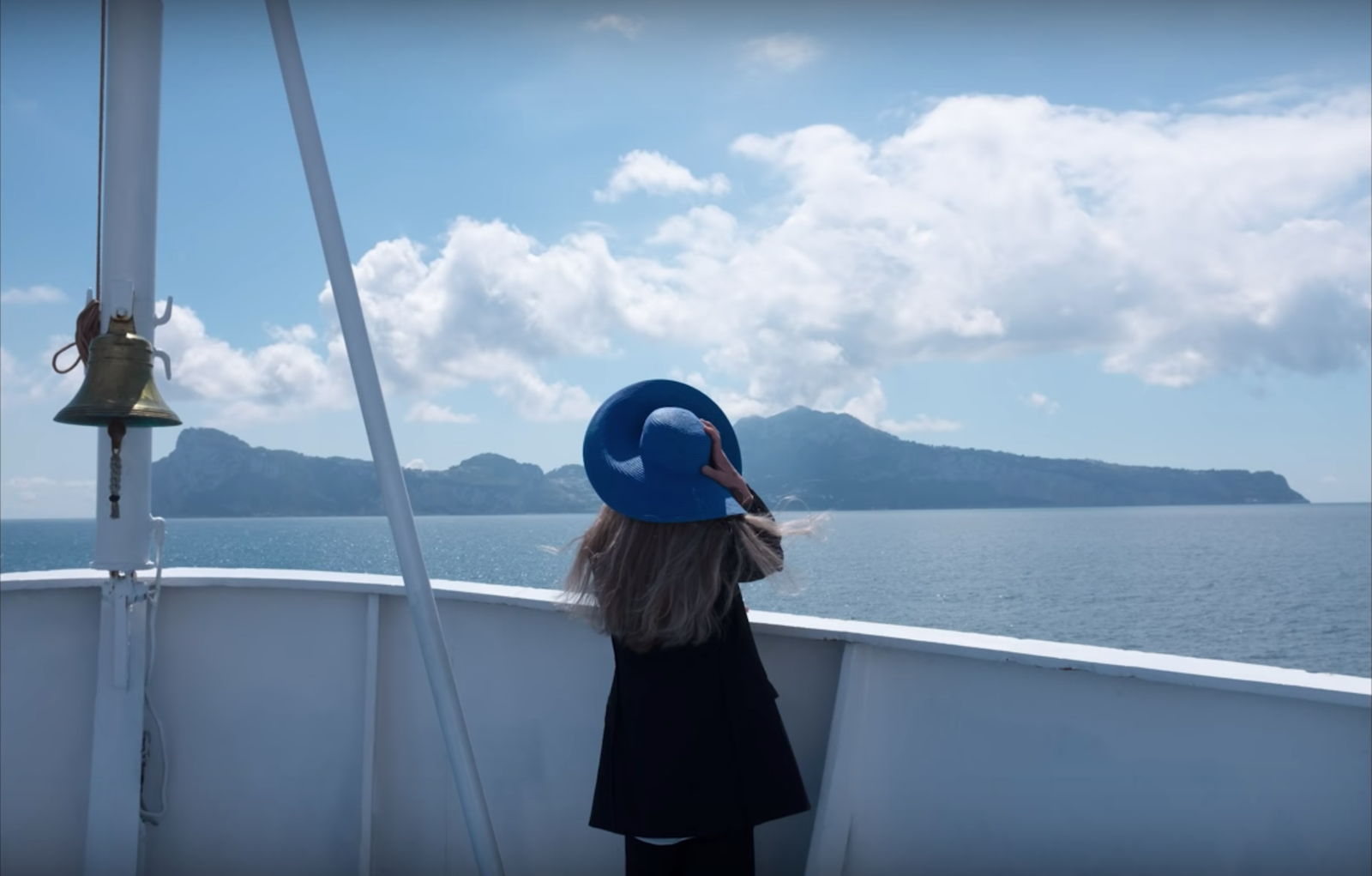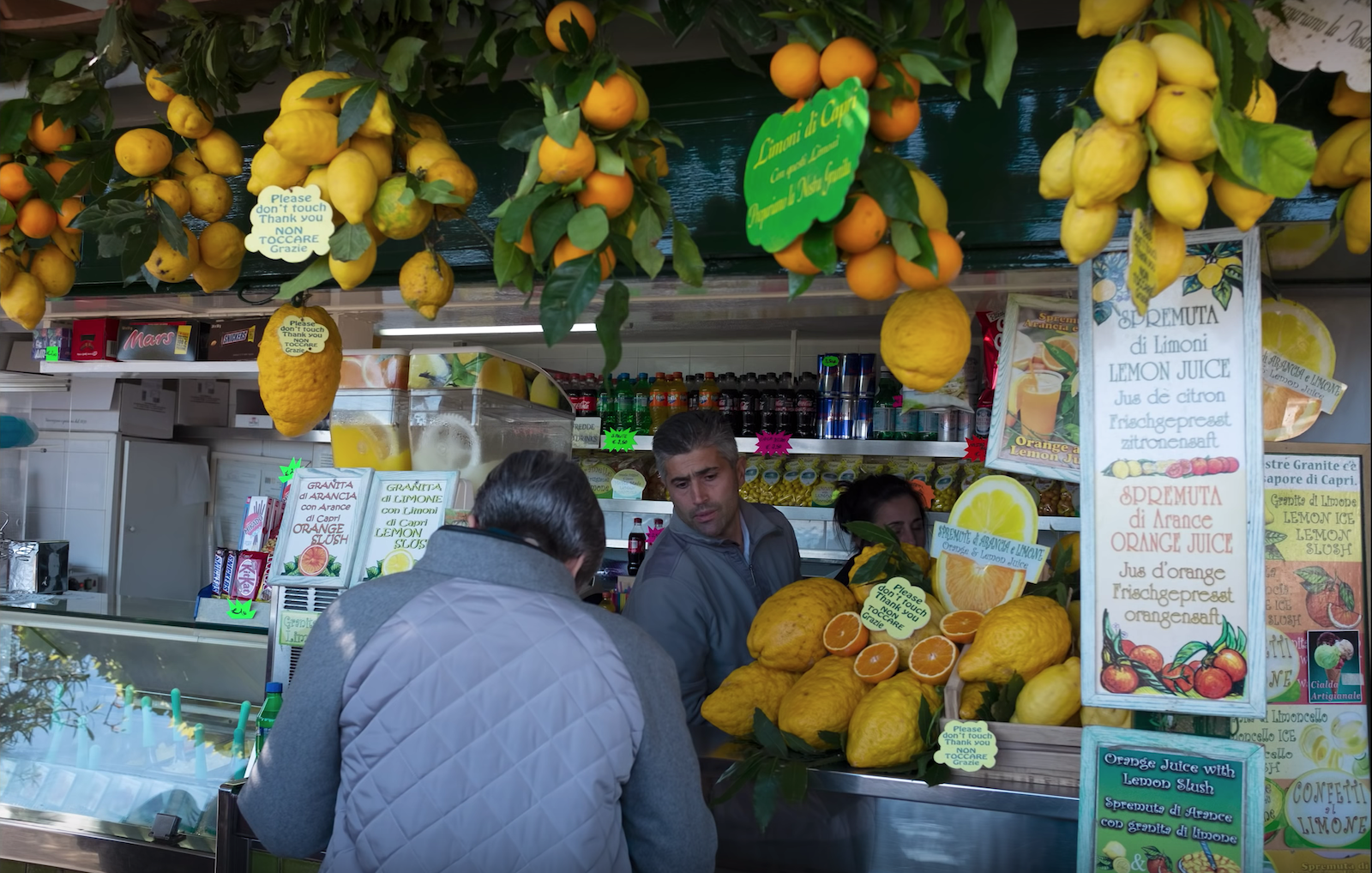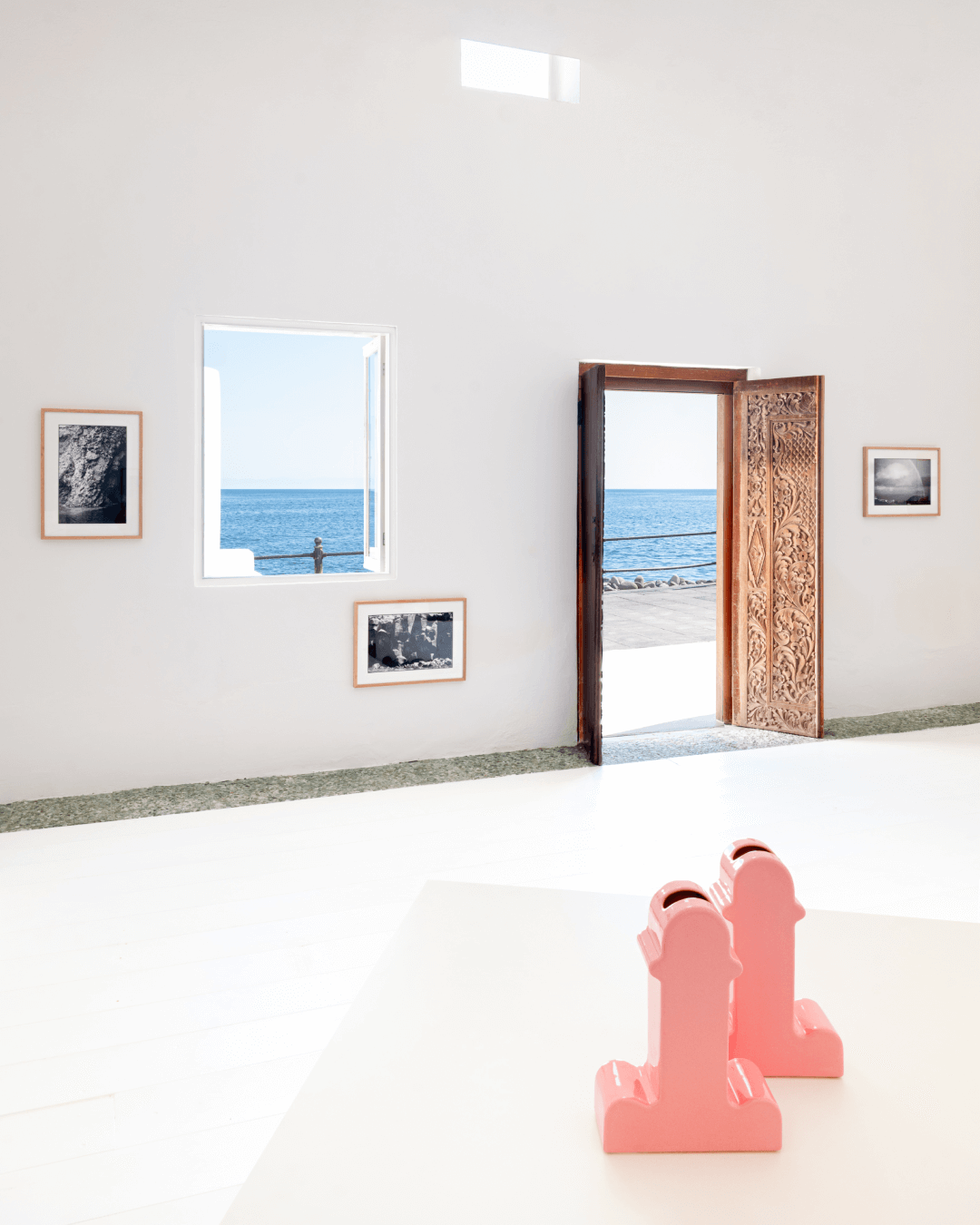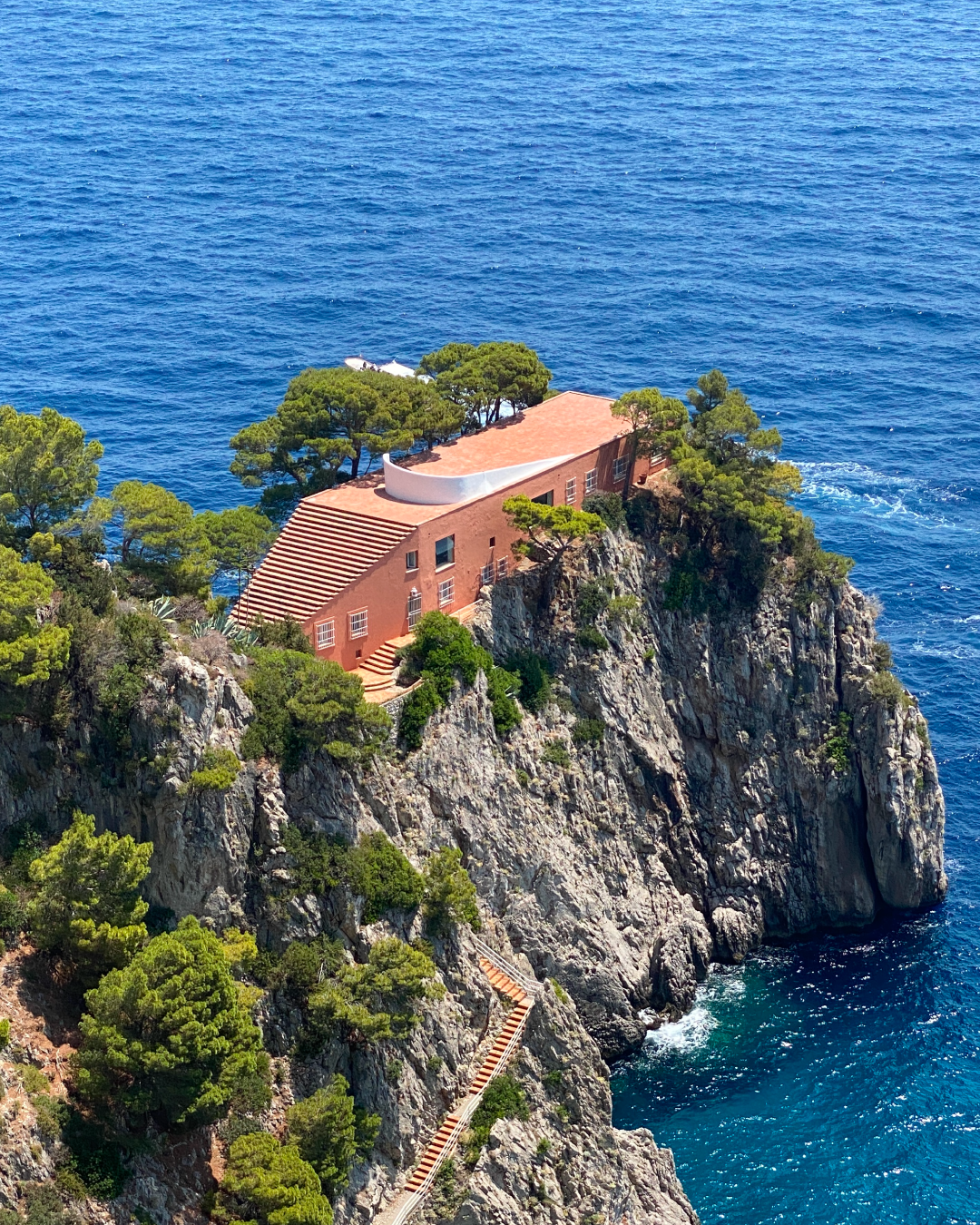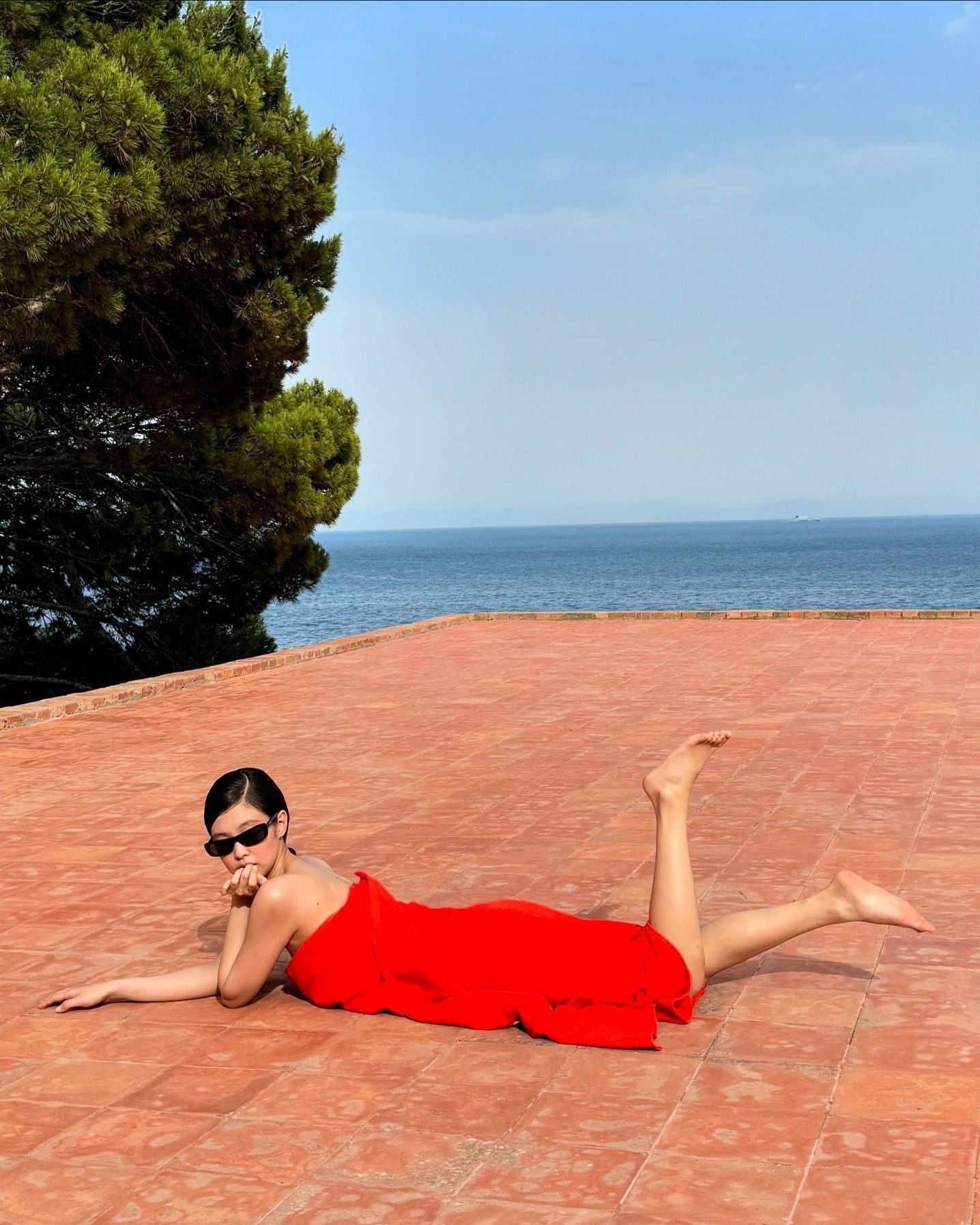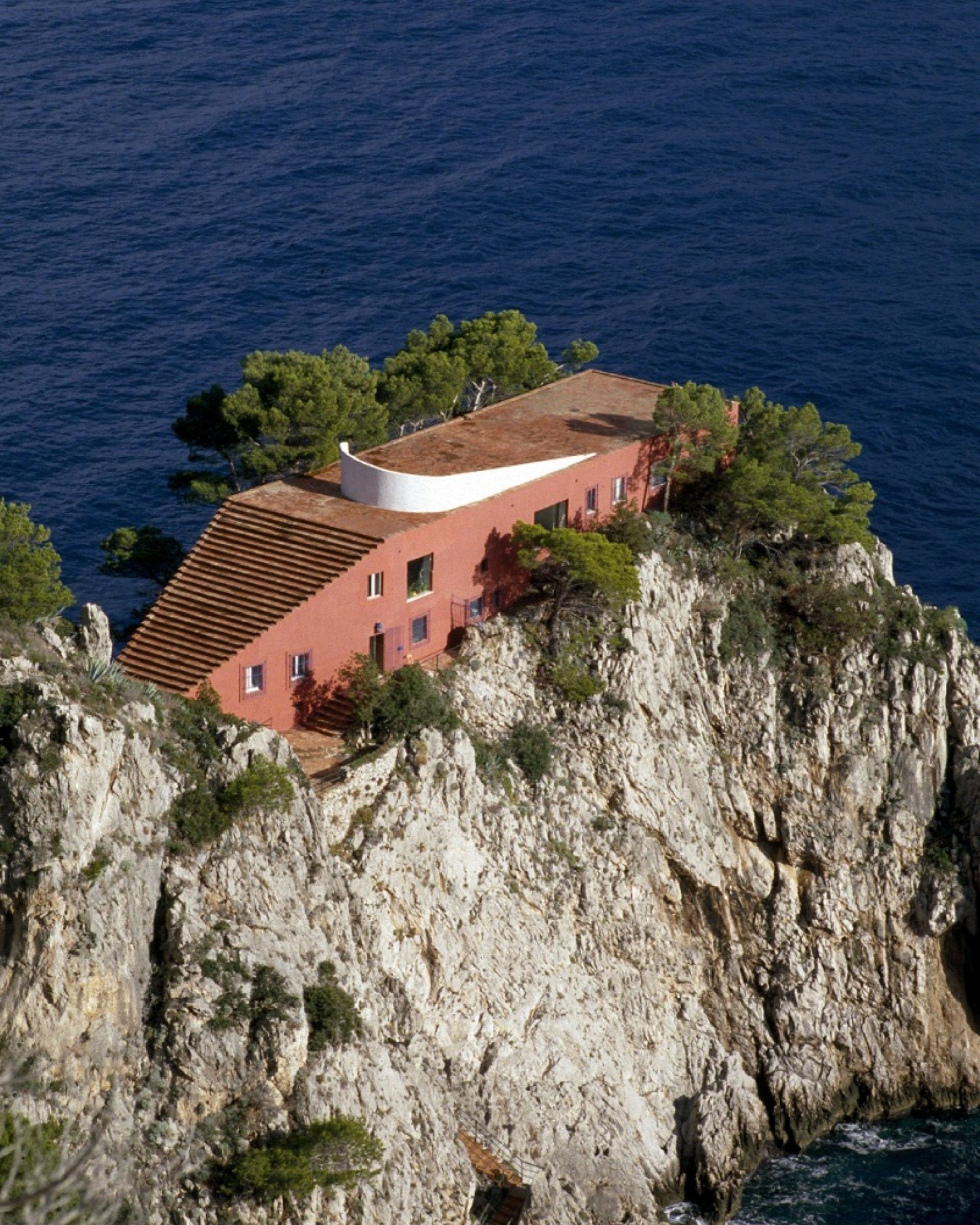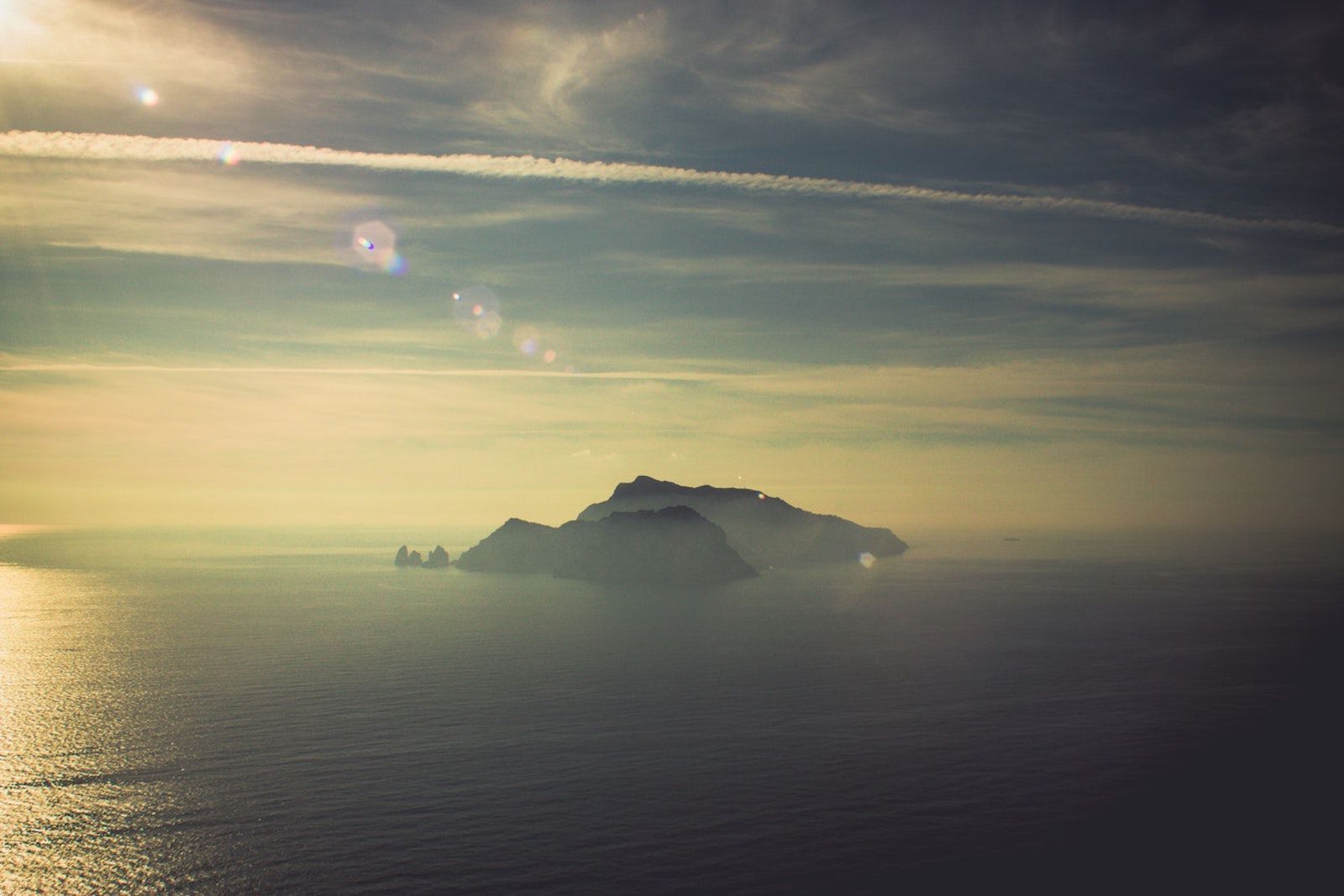
Capri, the island of mermaids A cinematographic story that goes from Godard to Sophia Loren and LIBERATO
There are very few private homes, or mansions, so symbolical and unique to be able to represent an entire city or an island. If you leave out the institutional building, or the ones then turned into a museum, Villa Malaparte in Capri is actually on the most iconic Italian private mansions. In an article written for the Italian newspaper “Il Foglio”, the writer Michele Masneri describes with these words the villa: «a red house with a staircase, with that white sail upon it, iconic like a Nike sneaker». Everything, in the Villa Malaparte, seems to be thought to be epic: its history, to begin, and the quarrel about its realization. Conceived in 1930 the villa was build only in 1943, and we’re not sure if from Curzio Malaparte himself (the moniker of the journalist and public intellectual Kurt Erich Suckert) or by Adalberto Libera, one of the most famous Italian rationalism architect. The Villa “magical” coefficient has alway, has been really high: in 1980 John Hejduk wrote for Domus an article, calling Villa Malaparte «a house of paradoxes. An object that consumes and full of stories that have to be told».
One year later Liliana Cavani direct the whole life of Malaparte, in La Pelle, a movie that made Capri and the Villa the true “focus” of the writer poetic - in the same movie, there’s the historic scene with the German in the Piazzetta (Ce stann 'e surdat, c'o vonn cu me» sang LIBERATO in GUAGLIÒ). At the time of the article by Hejduk, the Villa was already the theatre of many histories. In 1962 there was Le Mepris, direct by Jean-Luc Godard with Brigitte Bardot. The movie was inspired by Moravia and tells the story of the writer Paolo Javal, who was called to Capri in order to work for a movie on the Odyssey. It’s not a casual choice, since to the Ulysse’s legend is often linked to Naples itself («Ca dint scorr o sang r'Odisseo / So fatt cosi so partenopeo», LIBERATO in NIENTE). Events and fortunes of both Capri and Naples are usually been tied, not only because of geographical closeness but also due to the common cultural and cinematographic heritage. After Totò and his L’Imperatore di Capri, in 1960 Sophia Loren and Gary Clark - already cinema’s world stars - land in Capri to shoot “It Started in Naples” - where Loren sings a well-known version of Tu vuo fa l’Americano, a true Neapolitan icon.
It’s over those years that the myth of Capri is born. A myth that mixes the incredible morphological characteristics of the land - Faraglioni among all - with some kind of glamour appeal. And appeal that was also feed by Italian cinema from the 60s. There is a certain aesthetics that start to appear during those years - we can now call that “touristic cinema - that wheel around Capri. In CAPRI RENDEZ-VOUS, the series of short films that came out together with the last five pieces of LIBERATO, the filmmaker Francesco Lettieri came back to that idea, paying homage to that standard. The idea of a sudden love story among a holidaymaker and an island inhabitant was already developed by Giuseppe Patroni Giffi in Il Mare, settled in Capri. But the dramatic ending of Il mare is here, thinner. Marie, a young French star of cinema, fell in love with Carmine, a Capri “scugnizzo”. Everything, in the video clips, points out the importance of Capri in the Italian cinematographic industry, even as a mere meeting point for cinema stars (during “Nunn’a voglio ‘ncuntrà” we see Marie and his man maybe nominees for an Oscar). One of the characteristics of Capri tourism is its recurrence. In 2014 MJ Smith on New York Times wrote:
«In the past, those tourists often became buyers in what has been a particularly seasonal market — experiencing a kind of love at first sight, struck by a villa’s sunny setting and its views of blue sky and even bluer sea».
Also Lettieri, on Instagram, remembered the beauty of Capri during May, when there are a very few tourists on the island.
Among the many storylines that you can find in CAPRI RDV e in its romantic idealization of Capri, there an extremely nostalgic («Guardame 'nfacc, 'rinda all'uocchie ce sta 'a nostalgia») and social one. In the video of NIENTE, Lettieri shows the effect of the “fast-tourism”. A kind of tourism that not only is “for the masses” but it’s also repetitive, as the photogram of NIENTE shows, that took inspirations from the work of Martin Parr. Doctor Eliana Messineo identifies that one as the third phase of tourism, “the massification of tourism”, that, along with the democratization of it, came with some dangerous side effects. In the last years, Capri faced many problems: the population almost doubled during summertime, and it’s not easy to manage 2.3 million tourists during the season. Last first of May, the city mayor banned plastic, after done it with scooter and bicycle last years.
On the most famous definition of nostalgia is “the warm, fuzzy emotion that we felt when we think about beautiful memories in our past». The kind of nostalgia from “Capri Rendez Vous” is more a rebuild than nostalgia of the past, a re-proposition of a historic time when the myth was built. A myth intended to mean forever, no matter the tourism.














































